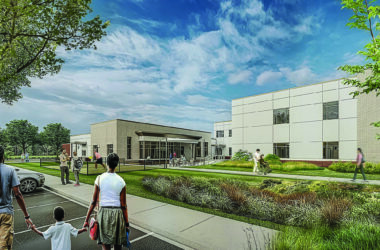By ERIN TIERNEY, [email protected]
It’s the third-leading cause of death in Oregon. Yet, it doesn’t even hurt.
What’s worse is that, oftentimes, you don’t even know it’s happening.Recognizing the symptoms of stroke and seeking immediate medical attention can mean the difference of recovering almost completely and suffering major impairments, or worse.
But if it does happen to you or a loved one – as it had for some 1,400 patients in 2021 – the Willamette Valley is your best bet for treatment.
That’s no exaggeration. The Stroke Center at PeaceHealth Sacred Heart Medical Center RiverBend is the only Comprehensive Stroke Center between Sacramento, Calif. and Portland, Ore.
“Considering the size of our community, we’re kind of a rarity,” said Renee Potter, Stroke Program manager. “These are the types of facilities you see in your bigger metropolitan areas.”
They keep busy.
In 2020, nearly 1,200 stroke patients were treated at the Center. In 2021, nearly 1,400 patients were treated, Potter said, with that number steadily rising each year.
“Our stroke alerts have also increased monthly,” Potter said. Patients who present with or develop the signs of stroke are called “stroke alert” patients, and benefit from early stroke team intervention.
“We’re running about 90 stroke alerts a month, and trending above the national average. The national average falls around 18% and we’re at 22%,” she said.
How do you recognize if you’re having a stroke?
Part of what makes strokes so dangerous is, sometimes you don’t.
“Stroke symptoms can be very vague sometimes,” Potter said. “Most strokes don’t hurt and most don’t have headaches. People assume that’s what happens when having a stroke, so they wait or don’t seek treatment.”
Their demeanor can be “very misleading,” Potter said. “People can be very awake, talking to you and not aware that they are having those symptoms because it doesn’t hurt. It’s so dangerous. It’s so terribly dangerous.”
Potter said that, while every stroke is different, symptoms may include any of the following:
• Sudden numbness or weakness of the face, arm, or leg, especially on one side of the body.
• Sudden droopiness in the mouth while trying to smile.
• Sudden change of vision – blurred, blackened or double-vision eyes.
• Sudden severe or persistent headache
• Sudden loss of balance or coordination
• Sudden trouble with speaking or understanding
“One of the biggest determinants of stroke versus other neurological diagnoses is the symptoms occur suddenly. It just hits you,” Potter said. “Calling 911 and getting them to the hospital as quickly as possible will allow for the best outcome.”
Because the symptoms are often vague, education and outreach are essential.
Sarah Ewing, bedside nurse on the neurology unit, has been engaging with her sons’ Boy Scout Troop in Springfield for years, giving presentations to Scouts and their families on stroke awareness. That outreach has since expanded to classrooms, including at Pleasant Hill High School in recent months.
“It’s always interesting when you ask students to raise their hand if they know somebody that’s had a stroke. The numbers the last time were staggering,” Ewing said. She teaches them a tool called “FAST” an acronym for detecting a stroke: Facial drooping, Arm weakness, Speech difficulties and Time.
“It was neat to hear them say, ‘Oh, I think I could help somebody.’ If anybody would like us to come out and educate their group or their business, that’s what we’re here for,” Ewing said.
Time is of the essence. Early intervention is key. And it can happen to anyone.
“Our treatments are very time-specific. Once you start getting past a certain time, it can actually cause more damage if we try to treat them,” Potter said. The stroke team at RiverBend addresses the full spectrum of stroke-case diagnosis, treatment, rehabilitation, education and metrics for evaluating outcomes. Its cutting-edge endovascular large vessel clot removal surgery is available at only a handful of hospitals in Oregon and California.
A common misconception about stroke is that it only affects the eldery.
“Traditionally, strokes were considered an ‘old person’s’ disease,” Potter said. “That’s not the case … strokes are getting younger and younger, so we have to be really aware of that and assess the patient based on their symptoms, not their age and gender.”
Left untreated, stroke sufferers are 50% more likely to suffer another within the next six months, Potter said. “The faster that we resolve those issues, the less long-term disability the patient is going to have.”
Eighty percent of strokes are preventable through modifiable risk factors, like stabilizing blood pressure and cholesterol levels, eliminating drug, alcohol and tobacco use, clean eating and exercising, Ewing said.
“You do have some control. It may take a little time to get your health back to where it needs to be, but understand that you have some options,” Ewing said. “If you haven’t had a stroke, doing these things will significantly decrease your risk. If you have had a stroke, getting your risk factors back to normal significantly decreases your risk of having another one.”






